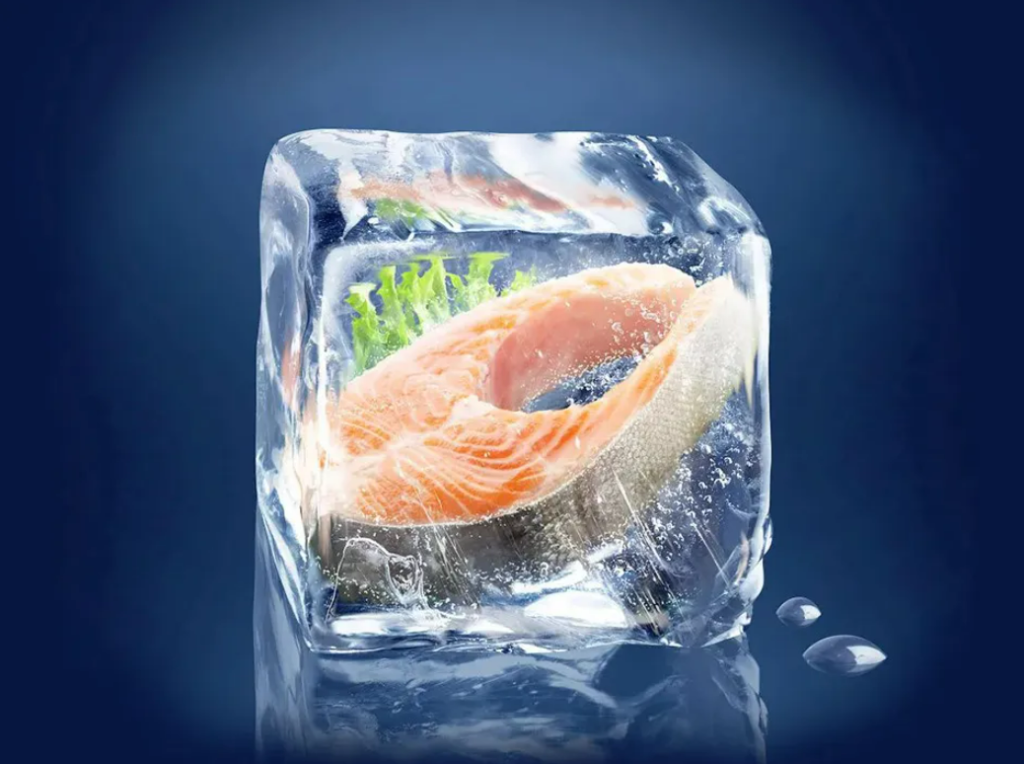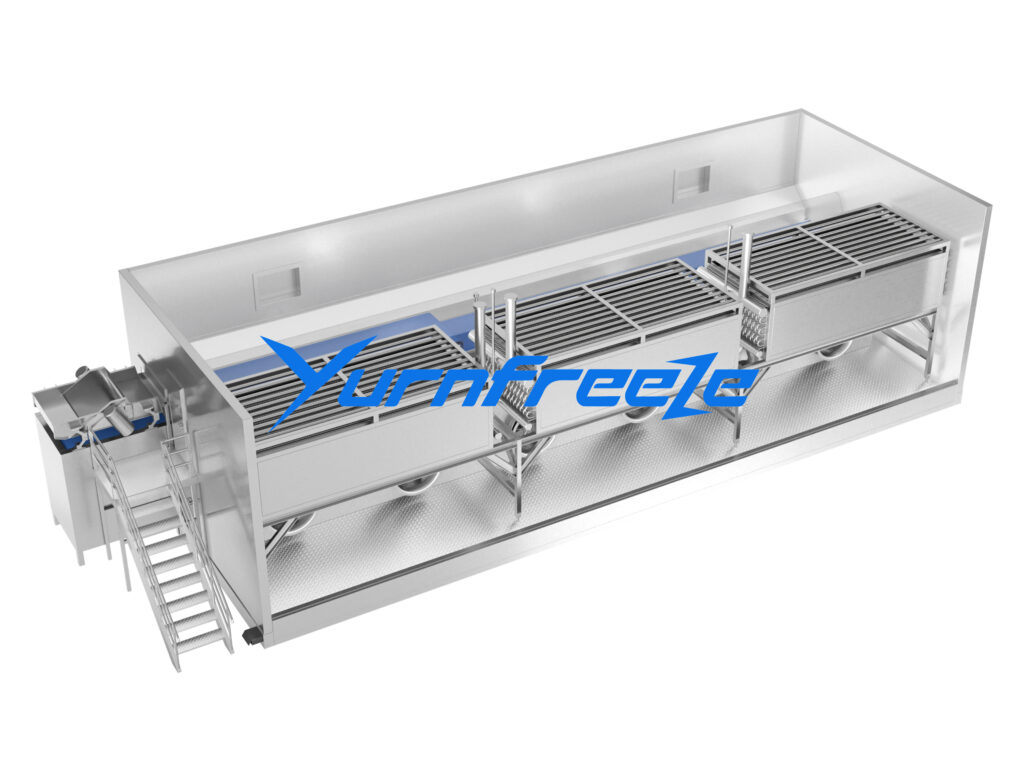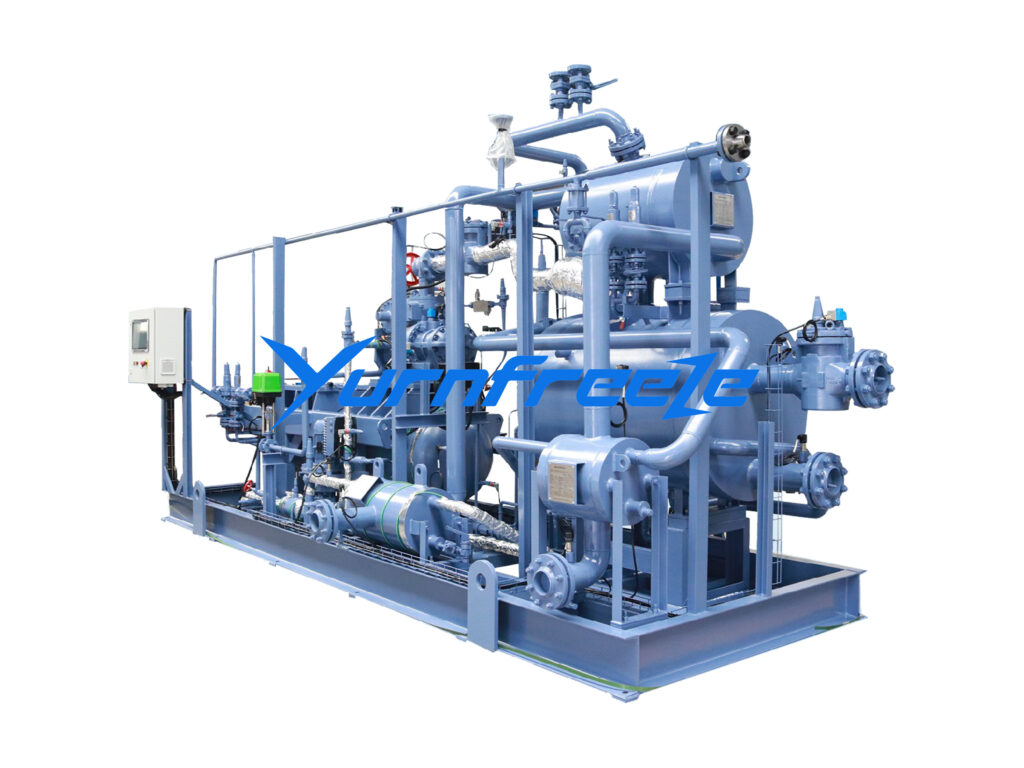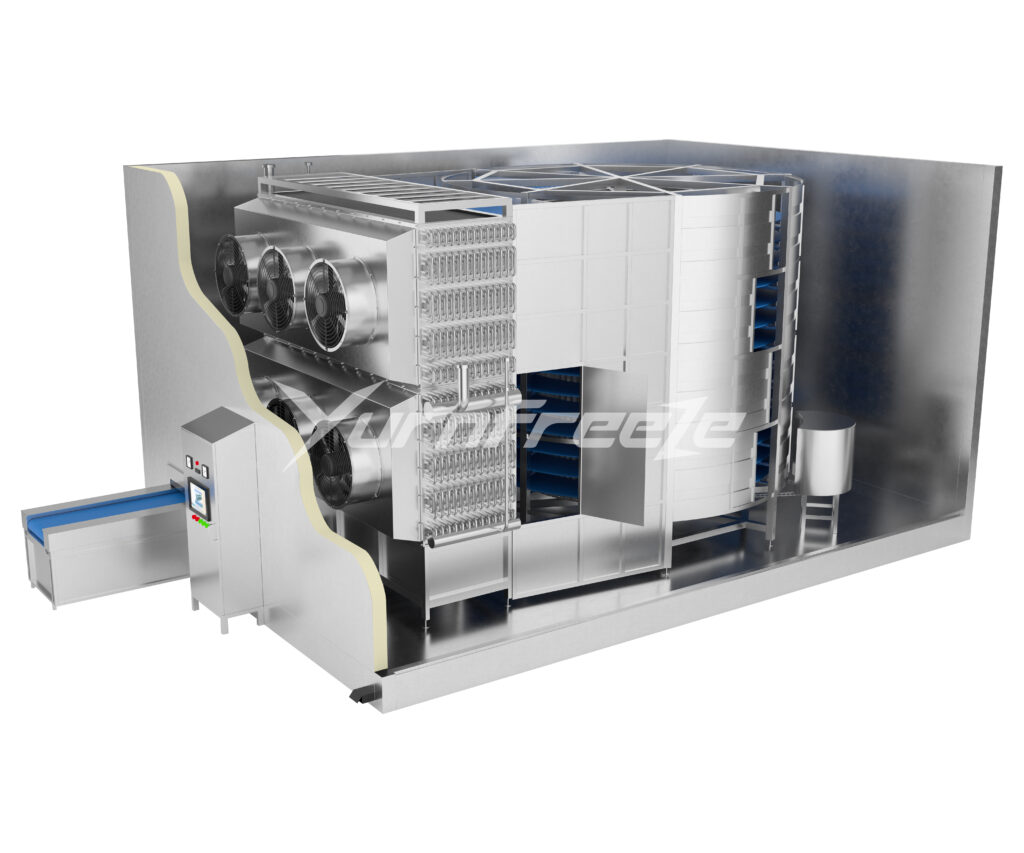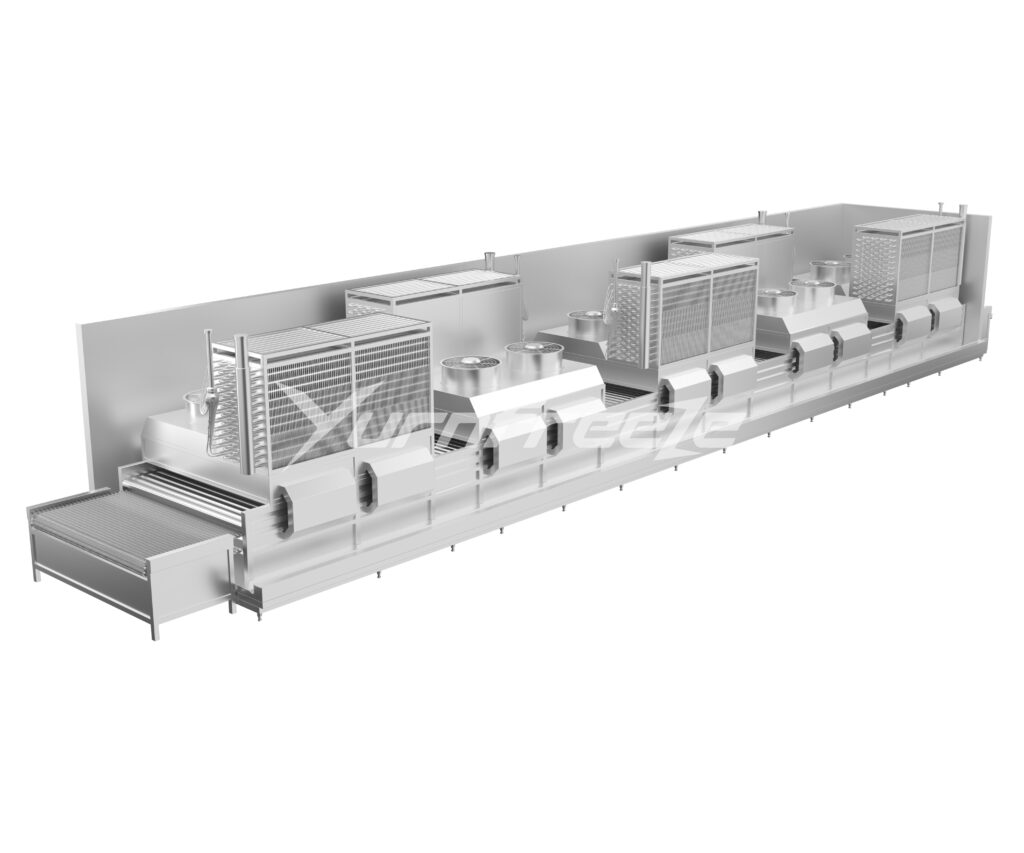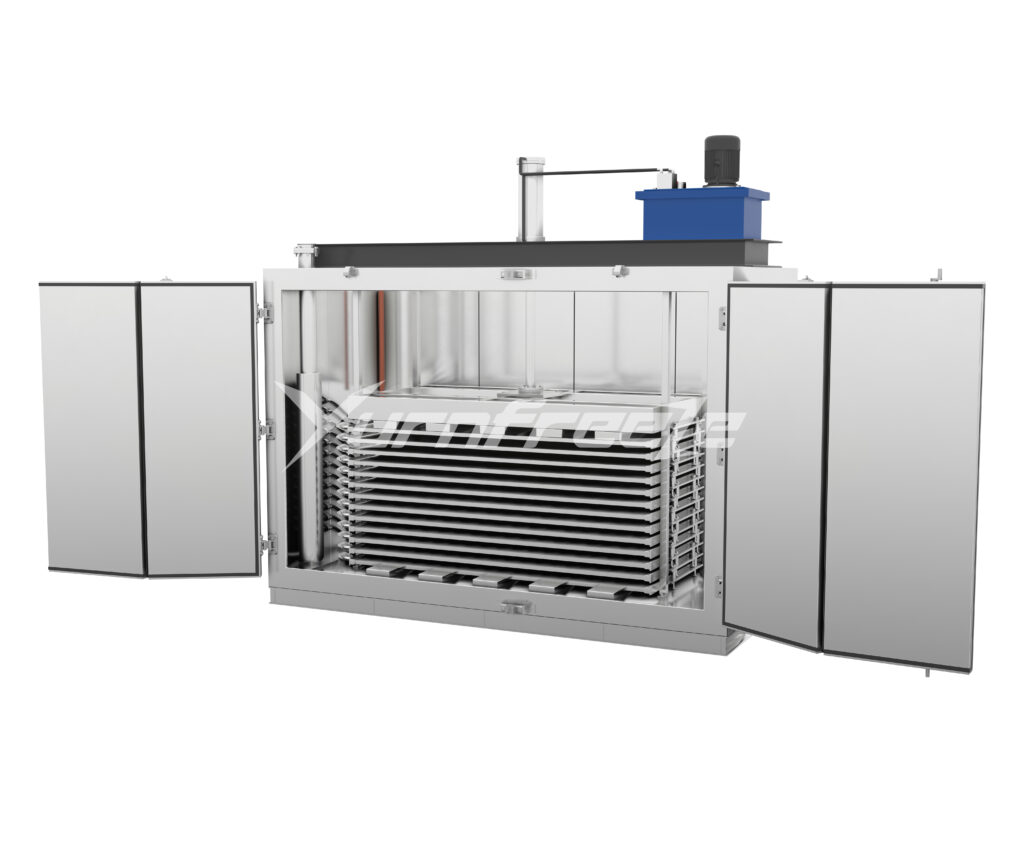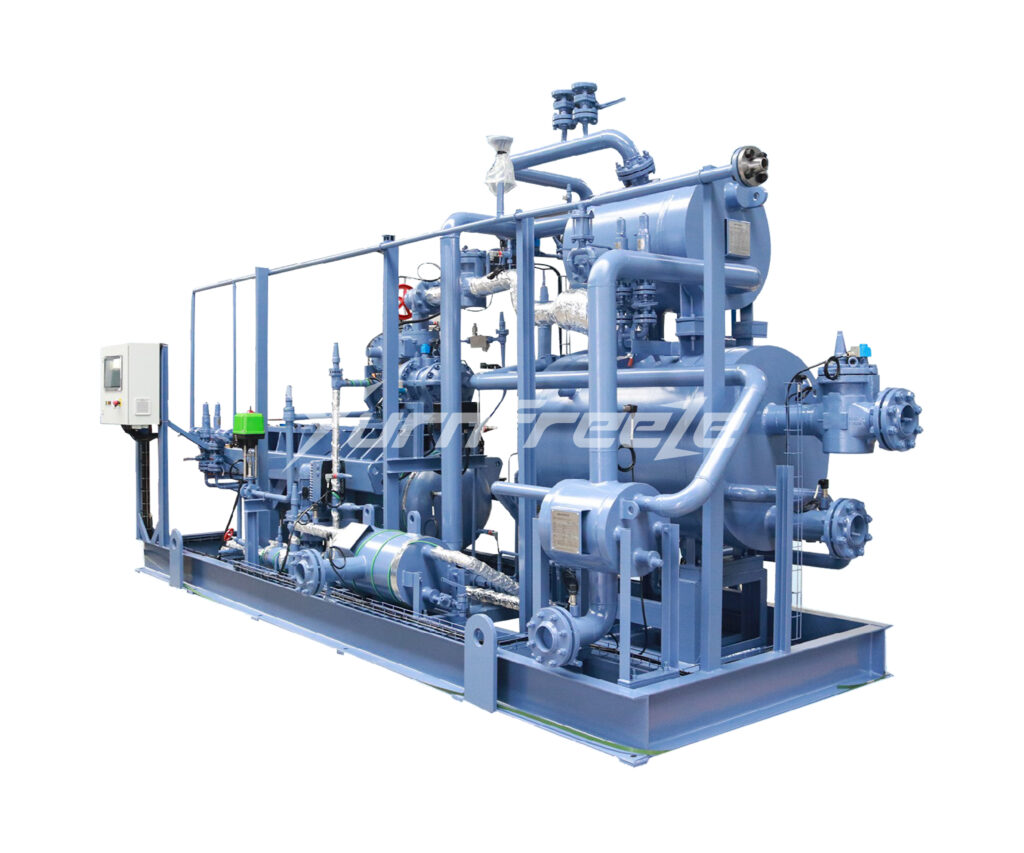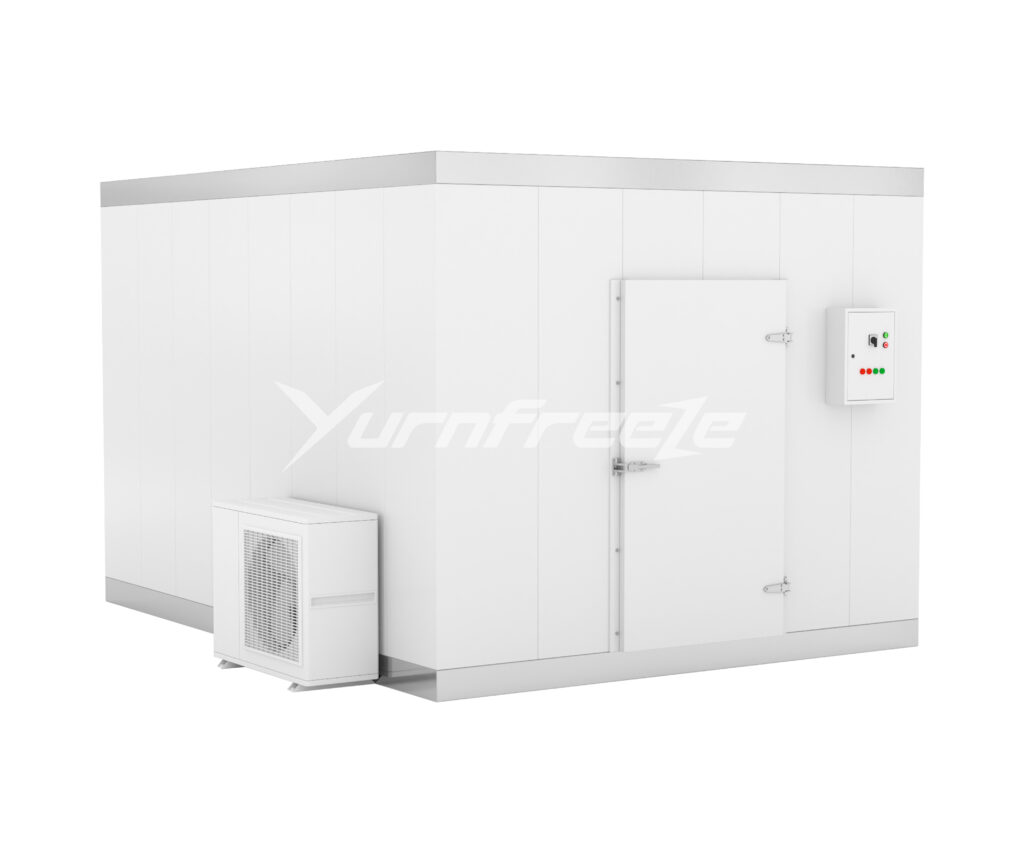Frozen food refers to food that has been properly processed from qualified food ingredients, frozen at -30°C, and stored and circulated at -18°C or lower after packaging. As the entire process is preserved in a low-temperature cold chain, frozen food has the characteristics of a long shelf life, not easy to corrupt, and convenient to eat, but this also poses greater challenges and higher requirements for packaging materials.
01 Common frozen food packaging materials
At present, the common frozen food packaging bags on the market mostly use the following material structures:
- PET/PE
This structure is more common in quick-frozen food packaging, with good moisture-proof, cold-resistant, and low-temperature heat-sealing performance, and the cost is relatively low. - BOPP/PE, BOPP/CPP
This structure is moisture-proof, cold-resistant, and has high low-temperature heat-sealing tensile strength, and the cost is relatively economical. Among them, the packaging bags of BOPP/PE structure have better appearance and feel than PET/PE structure, which can improve the grade of products. - PET/VMPET/CPE, BOPP/VMPET/CPE
Due to the presence of aluminum plating layer, this structure has exquisite surface printing, but the low-temperature heat-sealing performance is slightly poor, the cost is high, so the utilization rate is relatively low. - NY/PE, PET/NY/LLDPE, PET/NY/AL/PE, NY/PE
This type of packaging is resistant to freezing and impact. Due to the presence of NY layer, its puncture resistance is very good, but the cost is relatively high. It is generally used to package angular or heavy products.
In addition, there is a simple PE bag, which is generally used as an outer packaging bag for vegetables and simple frozen foods.
In addition to packaging bags, some frozen foods need to use blister trays. The most commonly used tray material is PP. Food-grade PP has good hygiene and can be used at low temperatures of -30℃. There are also PET and other materials. As a general transportation packaging, corrugated boxes are the first consideration for frozen food transportation packaging due to their shockproof, pressure-resistant performance and cost advantages.
02 Testing standards for frozen food packaging
Qualified goods must have qualified packaging. In addition to testing the product itself, the packaging must also be tested. Only after passing the test can it enter the circulation field.
At present, there is no special national standard for the testing of frozen food packaging. Industry experts are actively promoting the formulation of industry standards in conjunction with frozen food manufacturers. Therefore, when purchasing packaging, frozen food manufacturers must meet the general national standards for relevant packaging materials.
For example:
GB 9685-2016 “Standard for the Use of Additives for Food Contact Materials and Products” stipulates the use principles, types of additives allowed, scope of use, maximum usage, maximum residual amount or specific migration amount of additives for food containers and packaging materials;
GB/T 10004-2008 “Dry-process compounding and extrusion compounding of plastic composite films and bags for packaging” stipulates the appearance and physical indicators of composite films and bags without paper base and aluminum foil and plastic composite films and bags made by dry-process compounding and co-extrusion compounding processes, and stipulates the residual solvent amount of composite bags and films;
GB 4806.7-2016 “Plastic Materials and Products for Food Contact” stipulates tableware, packaging containers and food industry utensils made of polypropylene resin as raw materials.
In addition, in actual operation, frozen food manufacturers will also formulate some enterprise standards that meet their own conditions according to actual needs, such as quantitative requirements for molded products such as blister trays and foam barrels.
03 Two major issues cannot be ignored
- Food dry loss and freeze burn
Frozen storage can greatly limit the growth and reproduction of microorganisms and reduce the rate of food spoilage. However, for some frozen storage processes, food dry loss and oxidation will become more serious as the freezing time increases.
In the freezer, the distribution of temperature and water vapor partial pressure is as follows: food surface > surrounding air > cooler. On the one hand, the heat on the surface of the food will be transferred to the surrounding air, and its own temperature will be further reduced; on the other hand, the water vapor partial pressure difference between the food surface and the surrounding air will cause the water and ice crystals on the surface of the food to evaporate and sublimate into water vapor and merge into the air.
At this point, the air containing more water vapor absorbs heat, the density decreases, and moves to the top of the freezer; when flowing through the cooler, due to the extremely low temperature of the cooler, the saturated water partial pressure at this temperature is also very small. While the air is cooled, the water vapor contacts the surface of the cooler and condenses into frost attached to it. The density of the air after cooling increases, so it sinks and contacts the food again. This process will be repeated and cycled continuously, and the moisture on the surface of the food will continue to be lost and the weight will be reduced. This phenomenon is called “dry loss”.
During the continuous process of dry loss, the surface of the food will gradually become porous, increasing the contact area with oxygen, accelerating the oxidation of food fat and pigment, causing browning on the surface, and denaturation of protein. This phenomenon is called “freeze burn”.
Since the transfer of water vapor and the oxidation reaction of oxygen in the air are the root causes of the above phenomenon, as a barrier between frozen food and the outside world, the plastic packaging materials used in its inner packaging should have good water vapor and oxygen barrier properties.
- The influence of frozen storage environment on the mechanical strength of packaging materials
It is well known that plastics will become brittle and easy to break when they are in a low temperature environment for a long time, and their physical properties will drop sharply, which reflects the weakness of poor cold resistance of plastic materials. Usually, the cold resistance of plastics is expressed by brittle temperature. As the temperature decreases, plastic becomes brittle and easy to break due to the decrease in the activity of its polymer molecular chain. Under the specified impact strength, 50% of the plastics will be brittlely damaged. The temperature at this time is the brittle temperature, which is also the lower limit of the normal use temperature of plastic materials.
If the packaging material used for frozen food has poor cold resistance, the sharp protrusions of frozen food can easily puncture the packaging during the later transportation and loading and unloading process, causing leakage problems and accelerating the corruption of food.
In the storage and transportation links, frozen food is packaged in corrugated boxes. The temperature of the cold storage is generally set at -24℃~-18℃. In the cold storage, the corrugated box will gradually absorb moisture from the environment, and usually reach moisture balance after 4 days. According to relevant literature, when the corrugated box reaches moisture balance, its moisture content will increase by 2%~3% compared with the dry state.
As the refrigeration time increases, the edge pressure strength, compressive strength and bonding strength of the corrugated box will gradually decrease, and will decrease by 31%, 50% and 21% respectively after 4 days. This means that after entering the cold storage, the mechanical strength of the corrugated box will be affected to a certain extent, increasing the potential risk of box collapse in the later stage.
In the process of transporting frozen food from the cold storage to the sales location, it will undergo multiple loading and unloading operations. The constant change in temperature difference causes the water vapor in the air around the corrugated box to condense on the surface of the box. The moisture content of the box quickly increases to about 19%, and its edge pressure strength will decrease by about 23% to 25%. At this time, the mechanical strength of the corrugated box is further damaged, increasing the probability of box collapse.
In addition, in the stacking of cartons, the upper carton will exert continuous static pressure on the lower carton. When the carton’s compressive capacity decreases due to moisture absorption, the bottom carton will first deform and collapse. According to statistics, the economic losses caused by carton collapse due to moisture absorption and super-high stacking account for about 20% of the total losses in the circulation process.
04 Solution
In order to minimize the occurrence frequency of the above two problems and ensure the safety of frozen food, we can start from the following aspects.
- Choose high-barrier and high-strength inner packaging materials
There are many types of packaging materials with different performances. Only by understanding the physical properties of various packaging materials can we choose reasonable materials according to the protection requirements of frozen food, so that it can maintain the flavor and quality of the food and reflect the value of the product.
At present, the plastic flexible packaging used in the frozen food field is mainly divided into three categories:
The first category is single-layer packaging bags, such as PE bags, which have relatively poor barrier effects and are commonly used for vegetable packaging, etc.;
The second category is composite flexible plastic packaging bags, which use adhesives to bond two or more layers of plastic film materials together, such as OPP/LLDPE, NY/LLDPE, etc., with relatively good moisture-proof, cold-resistant and puncture-resistant properties;
The third category is multi-layer co-extruded flexible plastic packaging bags, which melt and extrude raw materials with different functions such as PA, PE, PP, PET, EVOH, etc., converge at the main die head, and are compounded together after inflation molding and cooling. This type of material does not use adhesives and has the characteristics of no pollution, high barrier, high strength, and high and low temperature resistance.
Data show that in developed countries and regions, the use of the third type of packaging accounts for about 40% of the total frozen food packaging, while my country only accounts for about 6%, which needs to be further promoted.
With the continuous advancement of science and technology, new materials are emerging in an endless stream, and edible packaging film is one of the representatives. It uses biodegradable polysaccharides, proteins or lipids as a matrix, and forms a protective film on the surface of frozen food through wrapping, impregnation, coating or spraying, which is made of natural edible substances and formed by intermolecular interactions to control moisture transfer and oxygen penetration. This film has obvious water resistance and strong gas permeability resistance. The most important thing is that it can be eaten with frozen food without any pollution, and has broad application prospects.
- Improve the cold resistance and mechanical strength of the inner packaging material
Method 1: Select reasonable composite or co-extrusion raw materials.
Nylon, LLDPE, and EVA all have excellent low temperature resistance, tear resistance, and impact resistance. Adding such raw materials in the composite or co-extrusion process can effectively improve the waterproof and gas barrier properties and mechanical strength of the packaging material.
Method 2: Appropriately increase the proportion of plasticizers.
Plasticizers are mainly used to weaken the secondary bonds between polymer molecules, thereby increasing the mobility of polymer molecular chains and reducing crystallinity, which is manifested as a decrease in the hardness and modulus embrittlement temperature of the polymer, as well as an increase in elongation and flexibility.
- Improve the compressive strength of corrugated boxes
At present, the market basically uses slotted corrugated boxes to transport frozen food. This kind of carton is made of four pieces of corrugated cardboard nailed together on all sides, and four flaps are cross-folded and sealed at the top and bottom. Through literature analysis and experimental verification, it can be found that carton collapse often occurs at the four pieces of cardboard placed vertically in the box structure. Therefore, strengthening the compressive strength of this part can effectively improve the overall compressive strength of the carton. Specifically, first, a ring-shaped inner sleeve can be added around the inner wall of the carton. It is recommended to use A-corrugated cardboard, which has good elasticity and shock absorption, and can prevent the sharp parts of frozen food from piercing the damp cardboard.
Secondly, a nested carton structure can be used. This type of box is usually made of multiple pieces of corrugated cardboard. The box body and the box cover are separated and used by nesting. Experiments show that under the same packaging conditions, the compressive strength of the nested structure carton is about twice that of the slotted structure carton.
- Strengthen packaging inspection
Packaging is of great significance to frozen food. Therefore, the state has formulated relevant standards and regulations such as SN/T0715-1997 “Inspection Procedures for Transport Packaging of Exported Frozen Foods”, and set the minimum requirements for the performance of packaging materials to ensure the quality of the entire process from packaging raw material supply, packaging process to packaging effect. In this regard, enterprises should establish a complete packaging quality control laboratory, equipped with oxygen/water vapor transmission rate tester with three-chamber integrated block structure, intelligent electronic tensile testing machine, carton compression machine and other testing instruments, and conduct a series of tests on frozen packaging materials such as barrier performance, compression performance, puncture resistance, tear resistance, and impact resistance.
In summary, frozen food packaging materials face many new demands and new problems in the application process. Researching and solving these problems will be of great benefit to improving the storage and transportation quality of frozen food. In addition, improving the packaging inspection process and establishing a test data system for various packaging materials will also provide a research basis for future material selection and quality control.

